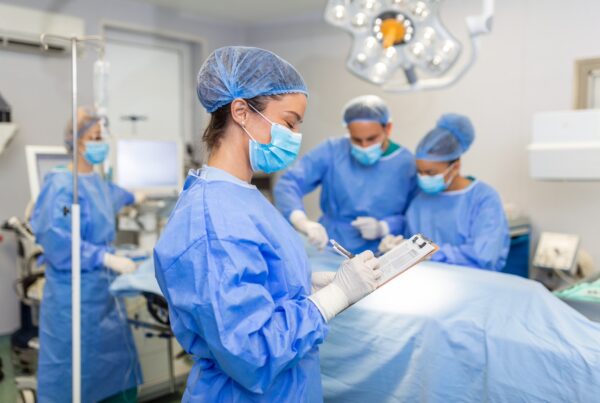With the spread of COVID-19 in the U.S., hospitals are having to adjust rapidly to managing the expected increase in COVID-19 admissions as well as protecting its staff and clinicians from viral transmission.
My team from Surgical Directions was in the midst of a typical large-scale hospital surgical services performance improvement effort, when an event occurred that brought home the reality of COVID-19.
Seven days after working through a full day of elective procedures, a surgeon tested positive for COVID-19. Working with state and local health care authorities and my team, the hospital immediately went into action to deal with this potential exposure:
- 50 staff members—nurses, technicians, and support personnel—who had contact with the surgeon, were instructed to self-quarantine for 14 days
- 5 anesthesia personnel involved in his patients’ care were also asked to self-quarantine
- As recommended by the American College of Surgeons[1], the hospital cancelled elective surgeries and procedures and transitioned to an urgent/emergent surgery only schedule
- To further protect its staff, clinicians, and patients, the hospital went into a lockdown mode, screening all those entering the building at a restricted number of entrances
- Free off-site COVID-19 testing was offered to any patient or staff that had symptoms of respiratory infection
- Strict rules on limited patient visitation were initiated
- In procedural and critical care areas, enhanced prevention of and protection from potentially infected respiratory droplets was implemented
- Hospital administration and physician leaders opened a command center to coordinate activities and keep the public and staff informed
This real-life scenario of a COVID-19 exposure demonstrates a number of important lessons:
- Unprotected exposure of healthcare clinicians and staff can have a devastating effect on staffing and patient care. Present and past examples of pandemics place the frontline healthcare providers at significant risk. When this exposure occurs, there can be significant absenteeism of indispensable personnel at a crucially needed time.
- Establishing a multidisciplinary command center, a communication plan, and appropriate task forces help ensure comprehensive and effective solutions.
- Protecting staff, clinicians, patients, and visitors requires vigilance and aggressive action. Whenever possible, limit elective patient tests and surgeries and promote off-site testing. Keeping resources and staff available for urgent/emergent care and the inevitable influx of COVID-19 patients is a priority.
This is one example of many approaches that we have seen recently around the country. Surgical Directions’ highly experienced team is available to help you and your hospital prepare and manage patient care during and following this crisis. Proactively addressing issues and creating a plan to respond and recover operationally is critical to hospital viability. Please do not hesitate to contact us at info@surgicaldirections.com, or at 312-870-5600 if you are looking for help or for more information.
[1] Information retrieved from: https://www.facs.org/about-acs/covid-19/information-for-surgeons



